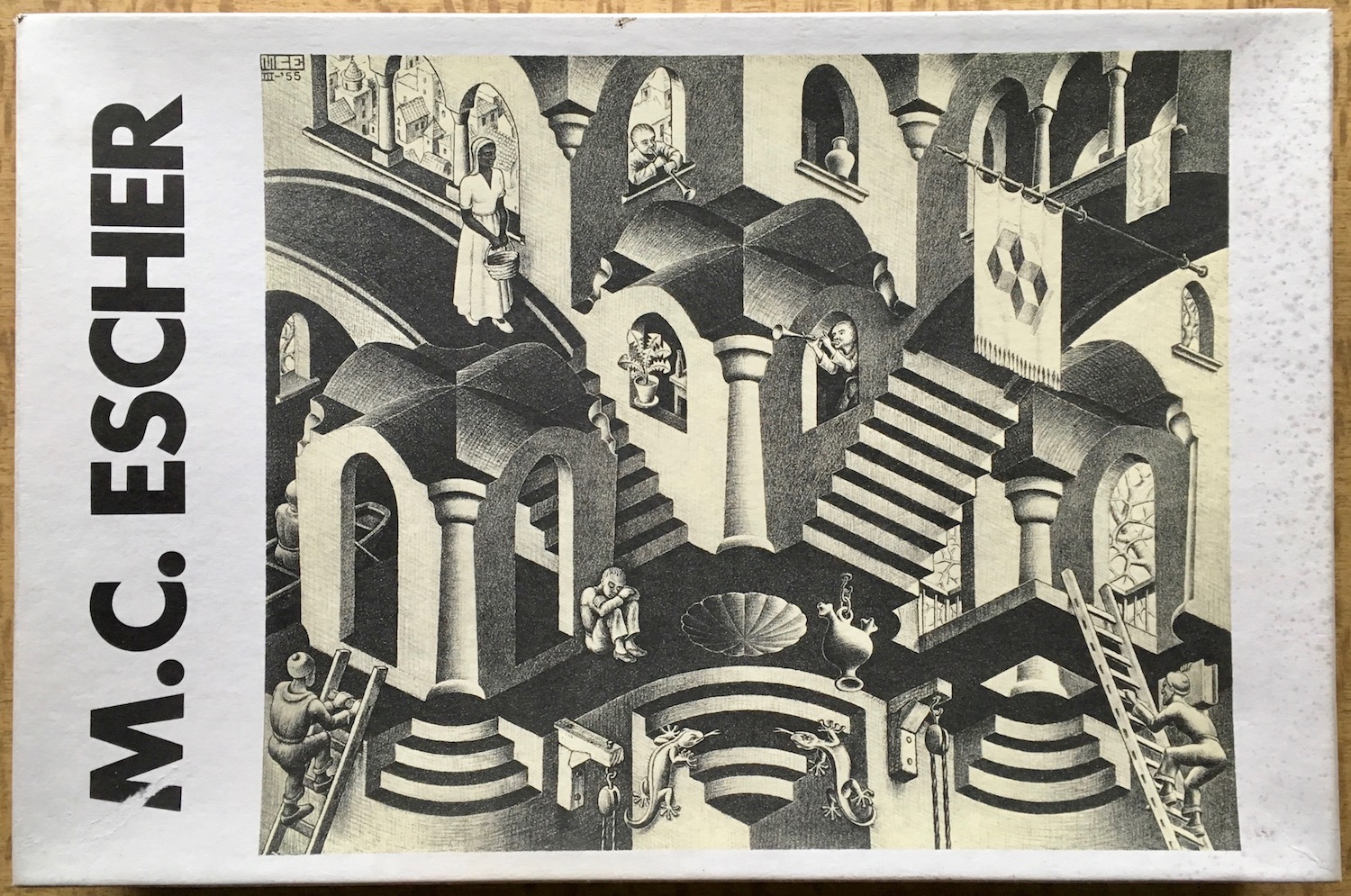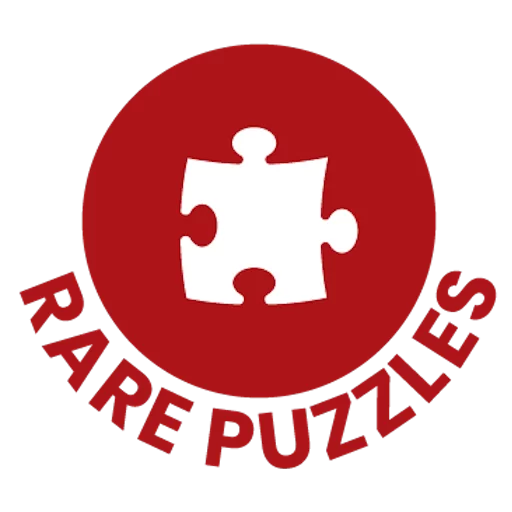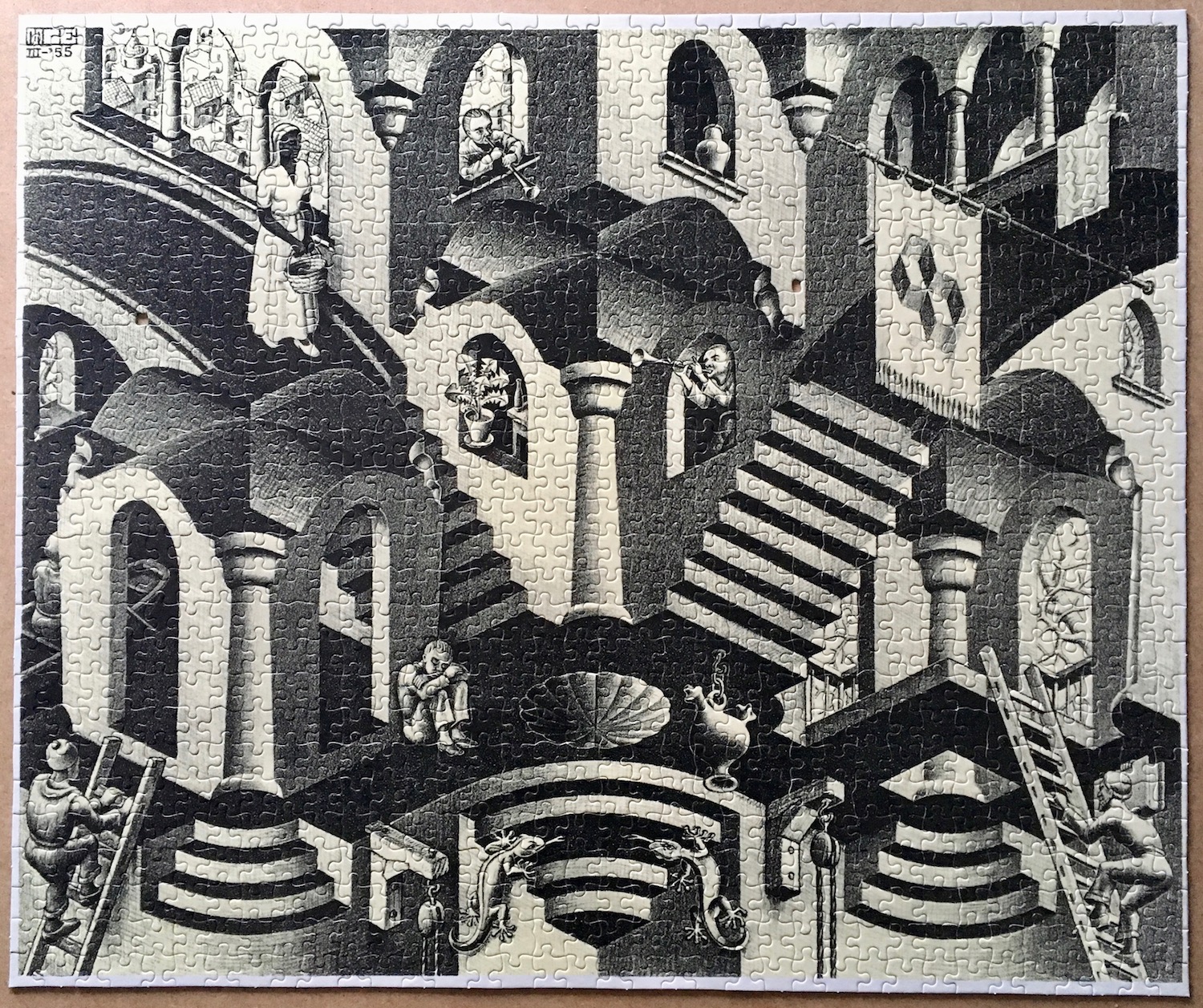Maurits Cornelis Escher is the creator of Concave and Convex, and he is one of the most interesting artists in the 20th century. One may like his paintings or not, but we must all agree that he is unique. In fact, most people are able to identify his work as soon as they see it, even if they don’t know the name of the painter. Perhaps they just know he was the Dutch graphic artist that painted impossible stairs, upside down rooms, strange reflections… However, when they see one work, they know it belongs to him.
For that reason, we can say that he is a quite popular artist. The M.C. Escher Foundation organizes exhibitions with his works regularly, and they always attract thousands of visitors. In fact, there was an exhibition in Madrid in 2017 for 8 months that showed around 200 works by Escher. It was one of the most visited in 2017.
Concave and Convex and other dichotomies
Escher got his inspiration partly on Mathematics and Geometry. Symmetry is a constant in the images he invents. For that reason, many of his paintings have a dichotomy in the title, like Concave and Convex in this case. However, we also have Ascending and Descending, High and Low, or Day and Night. His most important works have already a jigsaw puzzle version, which is another symptom of his popularity. Although different brands have manufactured puzzles by M.C. Escher, the Italian company Selegiochi is probably the most important publisher of his puzzles.
This is the first puzzle by M.C. Escher and the first puzzle by Selegiochi that I have put together. The fact that all the pieces have only different shades of black, white, and gray, adds to the challenge of the puzzle. However, since it is only 1000 pieces, the puzzle is quite manageable. The pieces are just slightly thinner than most other brands, but they have good quality, a nice feel to the touch, and fit very well. The design of the die was defective, though.
This was a used puzzle that I had to verify before listing it on Rare Puzzles. When I verified the puzzle, I found many small fragments. Sometimes, when a puzzle piece has very thin links, a part of the piece can break just by the movement of the pieces inside the bag. In the case of this puzzle, there were too many of them, and it was actually a defect from the factory.
That was the reason why I assembled the puzzle in the first place, in order to verify whether it was actually complete or not. The puzzle was complete, because all the pieces were there. Unfortunately, three of those tiny fragments were missing, so the puzzle will be used for replacements, and not listed for sale.
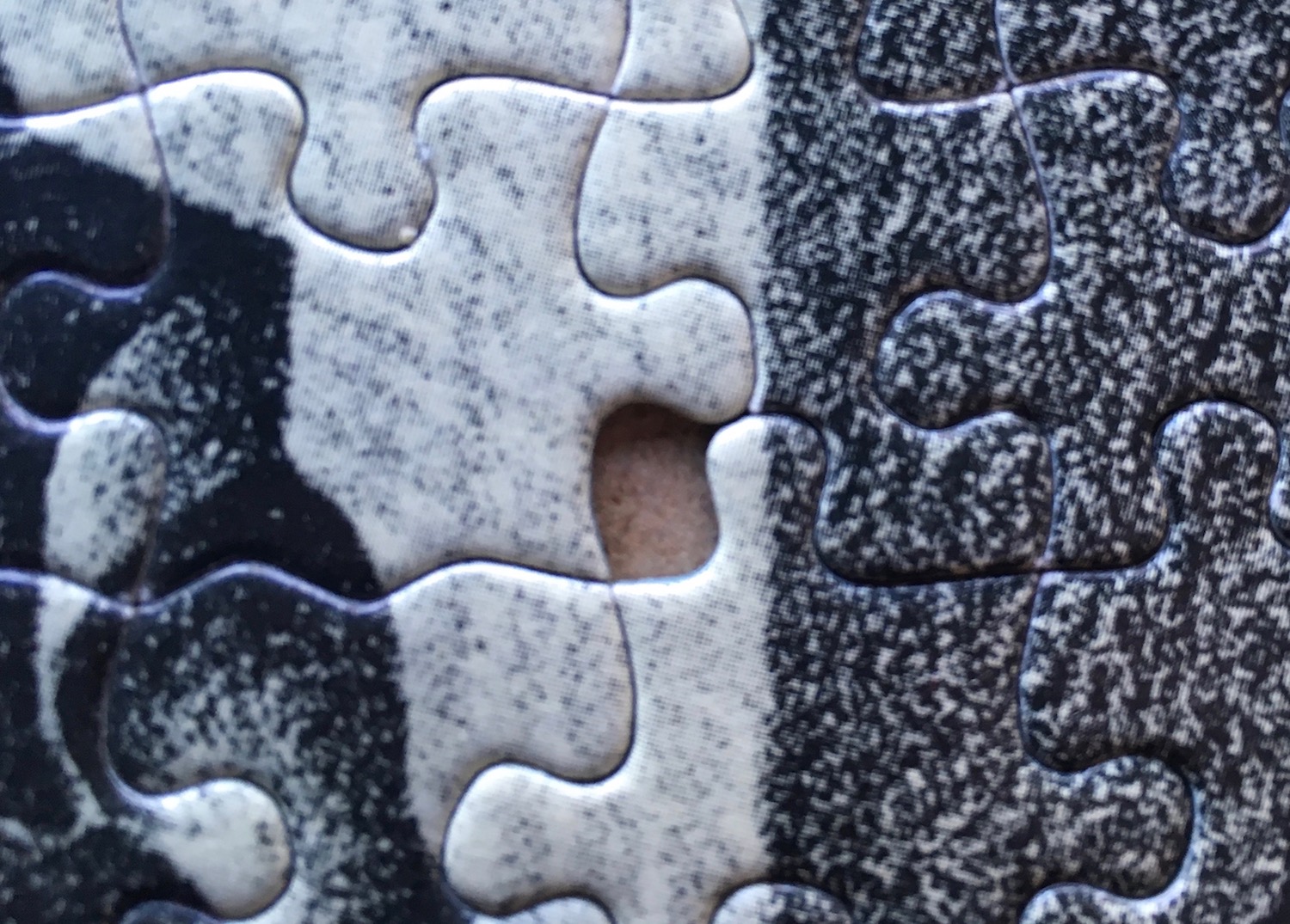

Notice in this photograph how the shapes of two different pieces actually intersect. This is a defect in the design of the die which I had not seen before. Surprisingly, the little tiny fragment was found during the verification process.
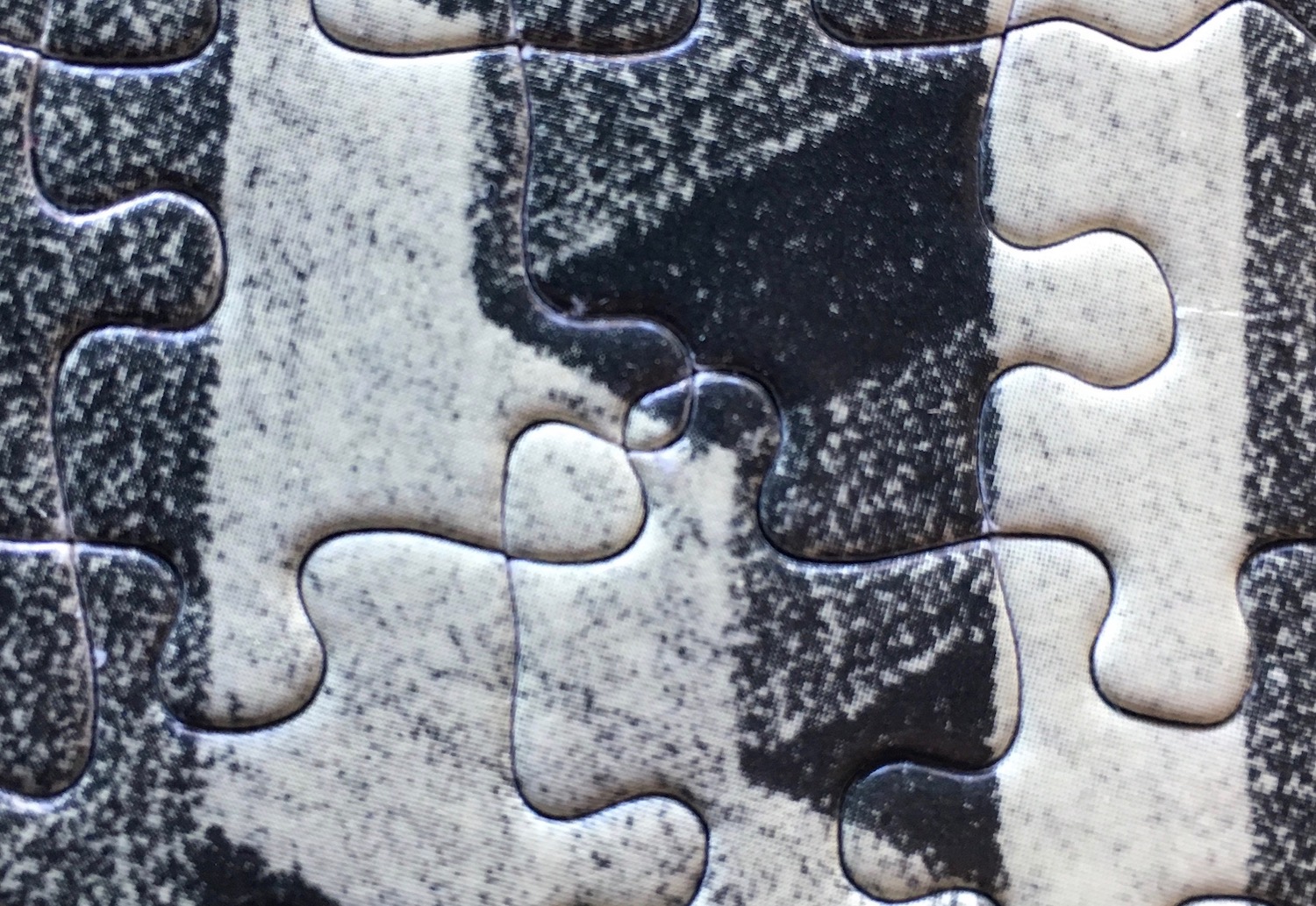

1000, Selegiochi, Concave and Convex, Maurits Cornelis Escher, 52 x 62 cm, No Reference Number.
